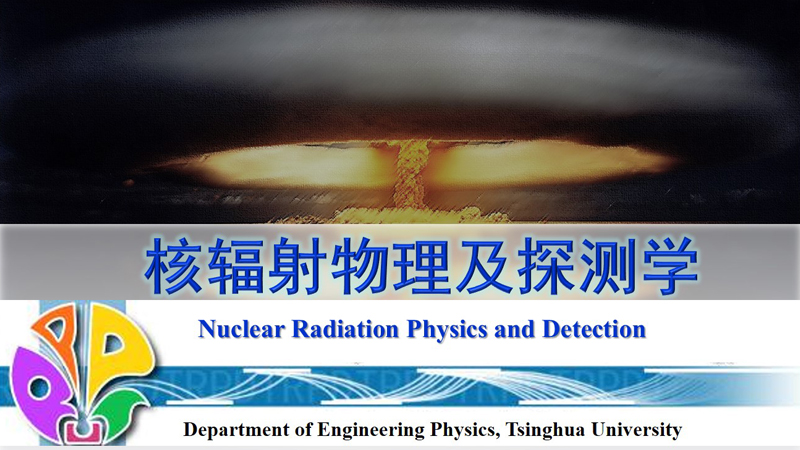
当前课程知识点:Production Engineering > Chapter 6 Sucker Rod Pumping(II) > 6.5 Calculation of Counterbalancing, Torque and Power > 6.5.5 Prime Mover Selection
返回《Production Engineering》慕课在线视频课程列表
返回《Production Engineering》慕课在线视频列表
同学们好
本节我们学习电动机的选择与功率计算
在以前的学习中我们学习了扭矩
以及扭矩曲线是如何得到的
我们知道在每一个曲柄转角的情况之下
它的扭矩大小是不一样的
通过这种计算
我们可以去分析
减速箱的选择依据
以及电机的功率的计算大小
每一个不同的转角
对应了不同的扭矩值
到底用哪个值去代表整个的扭矩的变化
去选择减速箱
去选择电机
我们就要引入这样一个概念
叫做等值扭矩
等值扭矩是指的
用一个不变化的固定扭矩
来代表变化的实际扭矩值
这种变化
条件是电动机的发热条件相同
这个时候选择的这个固定扭矩
就称为等值扭矩
具体的等值扭矩的计算公式
是用这种均方根的这种形式来做计算
我们如果得到每一个φ角
对应的扭矩值Mi的话
我们带入到这个公式中
就可以计算出它所对应的等值扭矩了
就像这个图上给出来的一样
我们用了这样一条固定的扭矩值
去代表这种变化的减速箱的输出扭矩
从而去选择电机的功率
这个地方需要强调的一点是
抽油机的电机
我们一般的是采用了
三相鼠笼式的异步电机
这种电机的特点就是允许短时间之内
超过它的额定功率
因此我们用这样一个
等值扭矩作为一个标准
去选择电机是合适的
对于这种等值扭矩的计算
有没有简化的方法
我们在上一节扭矩曲线中计算了
峰值扭矩的简化公式
我们可以用悬点的最大最小载荷
作为标准去计算出它的峰值扭矩来
这个地方我们给出来了几种
计算等值扭矩的简化方法
如果将悬点运动简化为简谐运动的时候
等值扭矩可以用这种公式来计算
也就是0.707乘以它的峰值扭矩
相应的如果悬点运动为真实运动的时候
等值扭矩等于0.54倍的峰值扭矩
同样的如果我们考虑了
抽油机的不平衡状态
可以采用0.6乘以峰值扭矩的办法
来得到它的等值扭矩
也就是说我们通过简化的公式
可以得到峰值扭矩的计算
然后再利用类似的这种公式
可以得到等值扭矩的计算方法
有了等值扭矩
我们如何来选择电机的功率
这个地方我们就需要确定电机的功率
与传动到减速箱输出轴上的扭矩
之间的关系是什么
这个关系我们用这个式子来表达
这里面我们需要知道的就是
功率应该是扭矩乘以它的转动速度
在这个式子里面
电机的额定功率用千瓦
它的传动效率
这是减速箱输出的转数
每分钟的输出转数
得到的扭矩它的单位是牛·米
用这个式子我们就可以建立起
电机的额定功率与减速箱的输出扭矩
之间的对应关系
我们前面讲了等值扭矩的概念
因此利用这个公式
我们就可以得到
电机的额定功率
与等值扭矩之间它的关系是什么
如果我们将不平衡的
抽油机的等值扭矩带入进去
我们就可以得到电机的额定功率
等于0.6倍的峰值扭矩
乘以减速箱输出的转数
也就是它的冲次
然后再比上9549乘以它的传动效率η
它这个就是电机的功率的计算公式
由此我们可以认识到我们前面所讲的
抽机的载荷计算
特别是它的最大最小载荷的计算
我们可以得到峰值扭矩的计算方法
通过峰值扭矩
我们可以得到等值扭矩的计算
而通过等值扭矩
我们就可以计算出
所需要的电机的额定功率是多少
这就是我们本节介绍的
电机功率的计算方法
同学们再见
-1.1 Main Tasks of Production Engineering
--1.1 Main Tasks of Production Engineering
-1.2 Flow in Production System
--1.2 Flow in Production System
-Problems
--Chapter 1 - Problems
-2.1 IPR Curve and Well Productivity
--2.1.1 Single-Phase Oil Inflow Performance Relationships
-2.2 Vogel's IPR and Applications
--2.2.2 Determination of IPR Curves Using Vogel's Equation
--2.2.3 Skin Factor and Flow Efficiency
--2.2.4 Extension of Vogel's Equation for Non-Complete Wells
--2.2.5 Combination Single-Phase Liquid and Two-Phase Flow
-Problems
--Chapter 2--Problems
-3.1 Two-Phase Flow in Wellbore
--3.1.1 Flow Regimes in Vertical Flow
-3.2 Two-Phase Vertical Flow Pressure Gradient Models
--3.2.1 Two-Phase Pressure Gradient Equations
--3.2.2 Predicting Gas-Liquid Flow Regimes Using the Okiszewski Correlation
--3.2.3 Pressure Gradient Calculation Using the Okiszewski Correlation
-3.3 Vertical Lift Performance
--3.3 Vertical Lift Performance
-Problems
--Chapter 3--Problems
-4.1 Nodal Analysis Approach
--4.1.2 Solution Node at Bottom of Well
--4.1.3 Solution Node at Wellhead
-4.2 Flow through Chokes
--4.2.2 Solution Node at Choke
-Problems
--Chapter 4--Problems
-5.1 Principles of Gas Lift
--5.1.2 Initial Kick-off of Gas Lift
-5.2 Gas Lift Valves and Gas Lift Completions
-5.3 Gas Lift Design
--5.3.1 Gas Lift Design for Specific Production Rate
--5.3.2 Gas Lift Design for Specific Injection Rate
--5.3.3 Kick-off Procedure with Unloading Valves
--5.3.4 Design Depths of Unloading Valves
-Problems
--Chapter 5--Problems
-6.1 Introduction of Surface and Downhole Equipment
-6.2 Operating Principle of Sucker Rod Pumps
-6.3 Pumping Unit Kinematics
--6.3.1 Motion of Polished Rod-Simple Harmonic Motion
--6.3.2 Motion of Polished Rod-Crank and Pitman Motion
-6.4 Polished Rod Load
--6.4.3 Peak Polished Rod Load and Minimum Polished Rod Load
-Problems
--Problems for chapter 6: Sucker Rod pumping I
-6.5 Calculation of Counterbalancing, Torque and Power
--6.5.1 Balance of Pumping Unit
--6.5.2 Counterbalancing Calculation
--6.5.3 Torque and Torque Factor
-6.6 Volumetric Efficiency of Pump
--6.6.2 Gas Effect on Pump Performance
--6.6.3 Measures of Enhancing Pump Volumetric Efficiency
-6.7 Design of Pumping System
--6.7.1 Strength Calculation and Design of Sucker Rod Strings
--6.7.2 Design Procedures of Pumping System
-6.8 Analysis of Sucker Rod Pumping Well Conditions
--6.8.1 Acoustic Surveys and Analysis of Annular Liquid Levels
--6.8.2 Introduction of Dynamometer Card
--6.8.3 Typical Dynamometer Cards
-Problems
--Problems: Chapter 6: Sucker Rod Pumping (II)
-7.1 Water Injection System
--7.1.1 Water Resources and Water Treatment
--7.1.2 Introduction of Water Injection System
-7.2 Injectivity Analysis
--7.2.1 Injectivity and Injectivity Index Curves
-7.3 Injection Tubing String
--7.3 Introduction of Injection Tubing Strings
-7.4 Analysis and Application of Injectivity Index Curves
--7.4.1 Analysis of Injectivity Index Curves
--7.4.2 Injection Choke Deployment
-Problems
--Chapter 7--Problems
-8.0 Introduction
-8.1 The Fracturing of Reservoir Rock
--8.1.1 Basic Rock Mechanics Parameters
--8.1.4 Fracture Initiation Conditions
-Problems
--Chapter 8(I)--Problems
-8.2 Fracturing Fluids
--8.2.2 Fluid-Loss Properties of Fracturing Fluids
--8.2.3 Rheological Properties of Fracturing Fluids
-8.3 Proppants
-8.4 Hydraulic Fracturing Design
--8.4.1 Productivity Index of Hydraulic Fracturing Wells
--8.4.2 Fracture Geometry Models
--8.4.3 Design Procedure for Hydraulic Fracturing
-Problems
--Chapter 8(II)--Problems
-9.0 Introduction
-9.1 Carbonate Acidizing
--9.1.1 Mechanism of Carbonate Acidizing
--9.1.2 Effect Factors of Reaction Rate
--9.1.4 Effective Distance of Live Acid
-9.2 Sandstone Acidizing
--9.2.1 Mechanism of Sandstone Acidizing
--9.2.2 Mud Acid Treatment Design
-9.3 Acidizing Treatment Technologies
--9.3.2 Acidizing Treatment Operations
-Problems
--Chapter 9--Problems
-Final Exam



